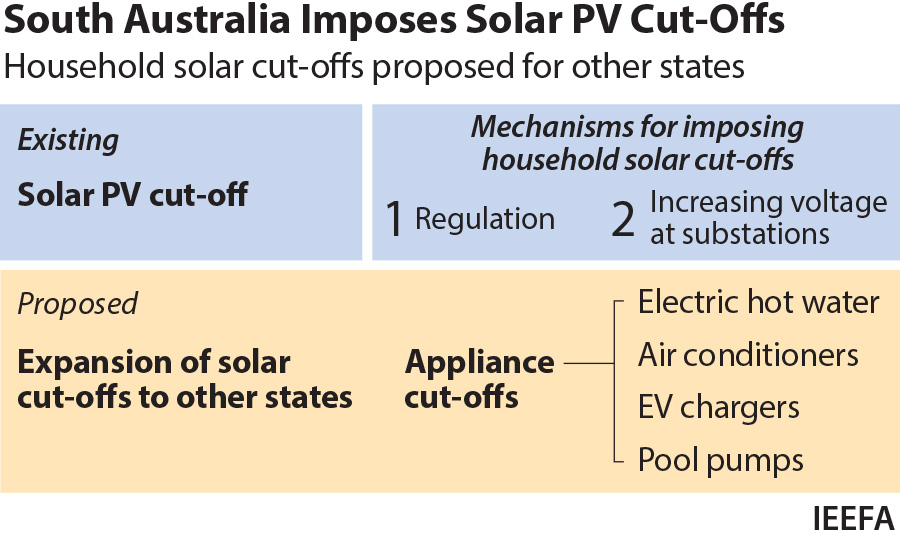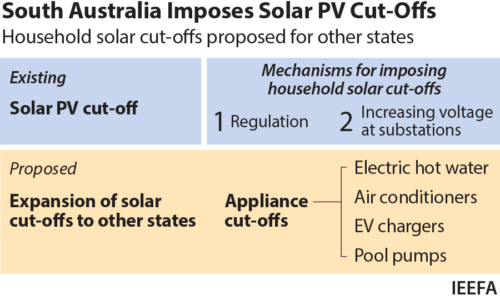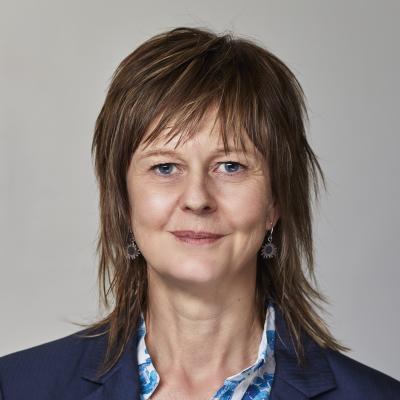IEEFA: Regulatory over-reach in South Australia’s switch-off of household solar

28 April 2021 (IEEFA Australia): New measures allowing rooftop solar systems in South Australia to be remotely switched off without householders’ knowledge has set a worrying precedent, according to a new briefing note from the Institute for Energy Economics and Financial Analysis (IEEFA).

The rooftop solar cut-off measures give energy authorities powers to switch off solar panels and was used for the first time in South Australia on 14 March 2021 affecting around 12,500 households.
Solar households were not compensated
“When this cut-off occurred, solar households were not compensated and everyone affected had to purchase electricity from the grid,” says Dr Gabrielle Kuiper, a distributed energy resources (DER) specialist and IEEFA guest author.
“It is a concerning development that state energy ministers are now considering similar regulations that would allow behind-the-meter appliances such as hot water systems, air conditioners, electric vehicle chargers and pool pumps to be switched off.
“This is a radical departure from the operation of the National Electricity Market (NEM) which has until this point not interfered in the running of behind-the-meter solar.
“Authorities should be focusing their efforts on accelerating the deployment of smart, dynamic technologies to modernise the grid rather than imposing crude cut-off mechanisms that reach in behind the meter and take control out of the hands of consumers.
“This is regulatory over-reach.”
Dr Kuiper says there are other solutions being developed for when the grid is experiencing minimum demand using digitisation, power electronics, artificial intelligence and network management tools.
Temporary fixes should not be allowed to morph into permanent control solutions
“The Australian Energy Market Operator (AEMO), distribution networks and energy ministers should be forward-looking and temporary fixes should not be allowed to morph into permanent control solutions.”
IEEFA calculates the cost of South Australia’s solar cut-off for about one hour on 14 March adds up to roughly $12,500 for all impacted households.
“It may sound like a trivial amount,” says co-author Steve Blume, President, Smart Energy Council. “But if solar cut-offs occur more frequently and for longer periods consumers could soon find themselves more substantially out of pocket, as they are forced to pay retail prices to buy electricity from the grid to replace their own self-generation capacity.
“Large energy users are compensated when they are shut down to assist system security, including through the Reliability and Emergency Reserve Trader (RERT), so why not small energy producers?
“Why is AEMO putting all the costs for managing the system in known circumstances of interconnector maintenance on distributed rooftop solar with no compensation?”
The briefing note points to a lack of quantitative analysis of the issue identified by AEMO in South Australia of maintaining minimum demand levels for system security, meaning any budget to address this potential risk cannot be calculated.
The solar cut-off regulation was rushed through
“The solar cut-off regulation was rushed through with potentially costly cut-offs imposed on households which have and are making private investments in solar assets in record numbers,” says Dr Kuiper.
“Good public policy requires an open, transparent, consultative process that includes a cost-benefit analysis or equivalent and provision for consumers’ best interests to be debated.
“Householders and business owners should be able to determine how they run their behind-the-meter appliances within the parameters set dynamically by the distribution companies or the system operator as needed, rather than being centrally controlled.”
Read the report: Blunt Instrument: Uncompensated Solar Cut-Off Isn’t the Only Solution to the Minimum Demand ‘Problem’
Author contacts: Dr Gabrielle Kuiper ([email protected]); Steve Blume ([email protected])
Media contact: Kate Finlayson ([email protected]) +61 418 254 237
About IEEFA: The Institute for Energy Economics and Financial Analysis (IEEFA) examines issues related to energy markets, trends, and policies. The Institute’s mission is to accelerate the transition to a diverse, sustainable and profitable energy economy. (www.ieefa.org)











